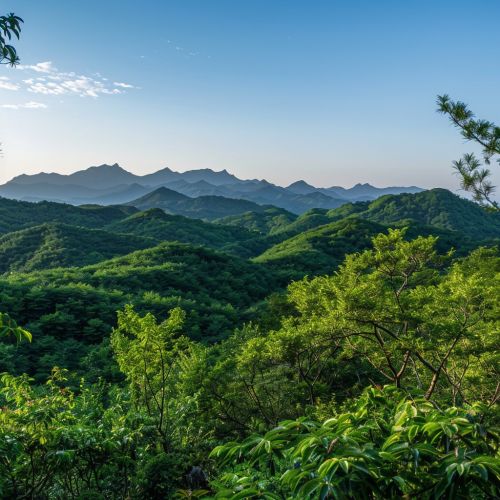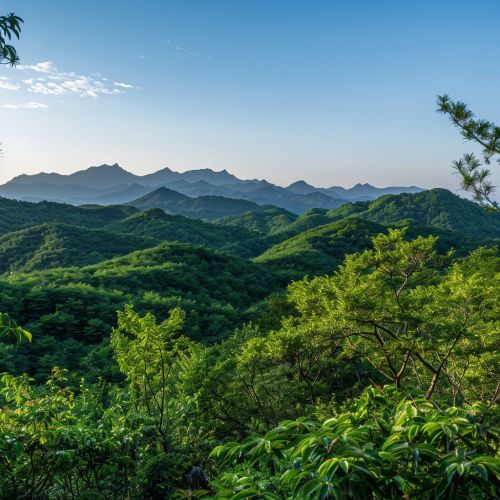Taebaek
Introduction
Taebaek is a city located in Gangwon Province, South Korea. Known for its mountainous terrain and rich cultural heritage, Taebaek is a significant location both historically and geographically. The city is situated within the Taebaek Mountain Range, which is one of the most prominent mountain ranges in South Korea. This article delves into the various aspects of Taebaek, including its geography, history, economy, culture, and notable landmarks.
Geography
Taebaek is located in the southern part of Gangwon Province, bordered by the cities of Samcheok and Jeongseon. The city is predominantly mountainous, with the Taebaek Mountain Range running through it. The highest peak in the range is Taebaeksan, which stands at 1,567 meters above sea level. The region is characterized by its rugged terrain, dense forests, and numerous rivers and streams.


The climate in Taebaek is classified as a humid continental climate, with cold winters and warm summers. The average annual temperature is around 10°C, with January being the coldest month and August the warmest. The city receives significant snowfall during the winter months, making it a popular destination for winter sports enthusiasts.
History
The history of Taebaek dates back to ancient times, with evidence of human settlement in the region during the prehistoric era. The area was historically part of the Goguryeo Kingdom, one of the Three Kingdoms of Korea. During the Joseon Dynasty, Taebaek was known for its coal mining industry, which played a crucial role in the region's economic development.
In the 20th century, Taebaek became a significant center for coal mining, contributing to South Korea's industrialization efforts. The city experienced rapid growth during this period, with the establishment of numerous coal mines and related industries. However, the decline of the coal industry in the late 20th century led to economic challenges for the region.
Economy
The economy of Taebaek has traditionally been based on coal mining. The city was once home to some of the largest coal mines in South Korea, which provided employment to thousands of workers. However, with the decline of the coal industry, Taebaek has had to diversify its economic activities.
Today, the city's economy is supported by tourism, agriculture, and small-scale manufacturing. Taebaek's natural beauty and mountainous terrain make it a popular destination for tourists, particularly those interested in hiking, skiing, and other outdoor activities. The city is also known for its production of high-quality agricultural products, including ginseng and medicinal herbs.
Culture
Taebaek has a rich cultural heritage, with numerous festivals and events held throughout the year. One of the most notable events is the Taebaeksan Mountain Snow Festival, which takes place every winter. The festival features ice sculptures, snow sledding, and various cultural performances, attracting visitors from across the country.
The city is also home to several historical and cultural sites, including ancient temples, traditional Korean houses, and museums. The Taebaek Coal Museum is a popular attraction, offering visitors a glimpse into the region's coal mining history and heritage.
Landmarks
Taebaek is home to several notable landmarks, many of which are located within the Taebaek Mountain Range. Some of the most prominent landmarks include:
Taebaeksan National Park
Taebaeksan National Park is a protected area that encompasses the Taebaek Mountain Range. The park is known for its stunning natural scenery, diverse flora and fauna, and numerous hiking trails. The park is also home to several cultural and historical sites, including ancient temples and shrines.
Hwangji Pond
Hwangji Pond is a natural spring located in the center of Taebaek. The pond is known for its clear, blue water and is considered a sacred site by locals. It is a popular spot for visitors, offering a tranquil setting for relaxation and reflection.
Yongyeon Cave
Yongyeon Cave is a limestone cave located in the Taebaek Mountain Range. The cave features impressive stalactites and stalagmites, as well as underground streams and waterfalls. It is a popular destination for spelunking and cave exploration.
Transportation
Taebaek is accessible by various modes of transportation, including road, rail, and air. The city is connected to other parts of South Korea by a network of highways and expressways. The Taebaek Line, a railway line operated by Korail, provides regular train services to and from the city.
The nearest airport to Taebaek is Yangyang International Airport, located approximately 150 kilometers away. The airport offers domestic and international flights, providing convenient access to the region for both tourists and business travelers.
Education
Taebaek is home to several educational institutions, including primary and secondary schools, as well as vocational training centers. The city also has a branch of Kangwon National University, which offers various undergraduate and graduate programs. The university is known for its research in fields such as environmental science, engineering, and agriculture.
